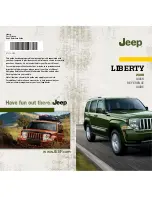
Does the shoulder belt cross
between the child’s neck and arm?
Is the lap part of the belt as low as
possible, touching the child’s
thighs?
Will the child be able to stay
seated like this for the whole trip?
If you answer yes to all these
questions, the child is ready to wear
the lap/shoulder belt correctly. If
you answer no to any question, the
child needs to ride on a booster seat.
A child who has outgrown a forward-
facing child seat should ride in a
back seat and use a booster seat
until the lap/shoulder belt fits them
properly without the booster.
Booster seats can be high-back or
low-back. Whichever style you select,
make sure the booster seat meets
federal safety standards (see page
) and that you follow the booster
seat maker’s instructions.
A child may continue using a booster
seat until the tops of their ears are
even with the top of the vehicle’s or
booster’s seat-back. A child of this
height should be tall enough to use
the lap/shoulder belt without a
booster seat.
If a child who uses a booster seat
must ride in front, move the vehicle
seat as far back as possible, and be
sure the child is wearing the seat
belt properly.
Some states, Canadian provinces and
territories also require children to
use a booster seat until they reach a
given age or weight (e.g., 6 years or
60 lbs). Be sure to check current
laws in the states, provinces and
territories where you intend to drive.
3.
4.
5.
45
Using a Booster Seat
Protecting Larger Children
Dr
iv
er
and
P
asseng
er
Saf
e
ty
53
Summary of Contents for 2010 Insight
Page 6: ......
Page 64: ...U S models Canadian models Safety Labels 58 DOORJAMBS ...
Page 306: ...300 ...
Page 390: ...384 ...
Page 436: ...430 ...
Page 442: ...436 ...
Page 452: ......
Page 453: ......
















































